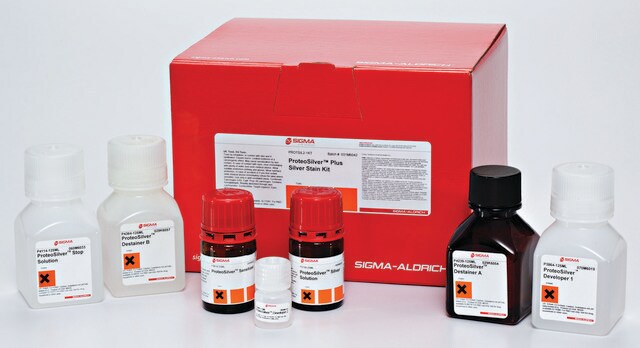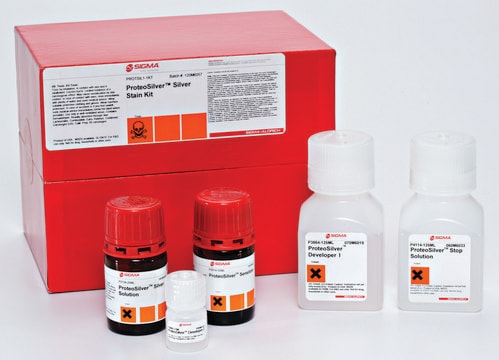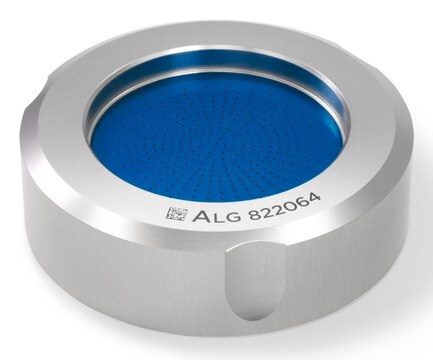S5692
SYPRO® Orange Protein Gel Stain
Synonym(s):
SYPRO® dye, protein gel stain
About This Item
Recommended Products
shelf life
≥6 mo. (when stored desiccated and protected from light at room temperature, 4 °C or 20 °C.)
Quality Level
technique(s)
protein staining: suitable
fluorescence
λex 300,470 nm; λem 570 nm
General description
SYPRO Orange is:
- Highly sensitive. The stain can detect 1 to 2 ng of protein per minigel band, making it more sensitive than Coomassie Brilliant Blue or silver staining.
- Rapid. Staining is complete in less than one hour
- Simple. After electrophoresis, the gel is stained, rinsed and photographed; no fixation or destaining steps are required
- Compatible with standard laboratory equipment. Stained proteins can be visualized with a standard 300 nm UV transilluminator or laser scanner.
- Cost-effective. Staining with SYPRO Orange is less expensive than silver staining and requires less time.
- Low protein-to-protein variability. The dye interacts with the SDS coat around the protein, giving more consistent staining between different types of proteins compared to Coomassie or silver staining.
- Selective for proteins. SYPRO Orange detects proteins as small as 6.5 kDa and does not stain nucleic acids or lipopolysaccharides. It does stain glycosylated proteins.
- Broad linear range of detection. The fluorescence intensity of the stained bands is linear with protein quantity over three orders of magnitude (a much broader range than either Coomassie or silver staining).
Application
Caution
Legal Information
related product
Storage Class Code
10 - Combustible liquids
WGK
WGK 3
Flash Point(F)
188.6 °F - closed cup
Flash Point(C)
87 °C - closed cup
Certificates of Analysis (COA)
Search for Certificates of Analysis (COA) by entering the products Lot/Batch Number. Lot and Batch Numbers can be found on a product’s label following the words ‘Lot’ or ‘Batch’.
Already Own This Product?
Find documentation for the products that you have recently purchased in the Document Library.
Articles
To meet the great diversity of protein analysis needs, Sigma offers a wide selection of protein visualization (staining) reagents. EZBlue™ and ProteoSilver™, designed specifically for proteomics, also perform impressively in traditional PAGE formats.
The possible causes and potential remedies for challenges encountered during preparation of samples for SDS-PAGE (sodium dodecyl sulfate polyacrylamide gel electrophoresis) and optimizing electrophoresis conditions.
Protocols
Protocol for sample preparation for cell lysis and efficient protein extraction from cultured tissues and cells for subsequent Western blotting.
Our team of scientists has experience in all areas of research including Life Science, Material Science, Chemical Synthesis, Chromatography, Analytical and many others.
Contact Technical Service








